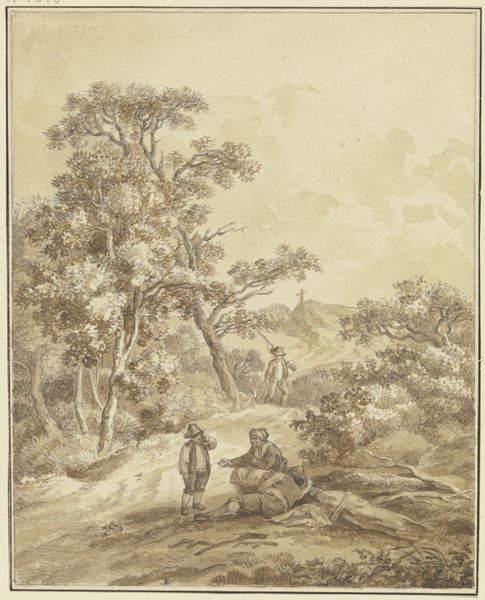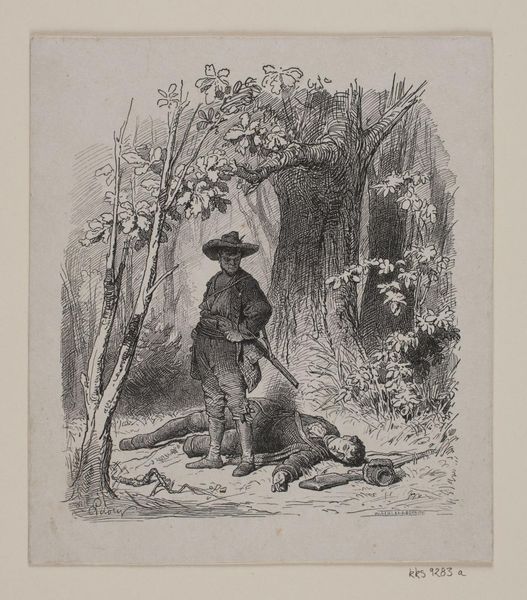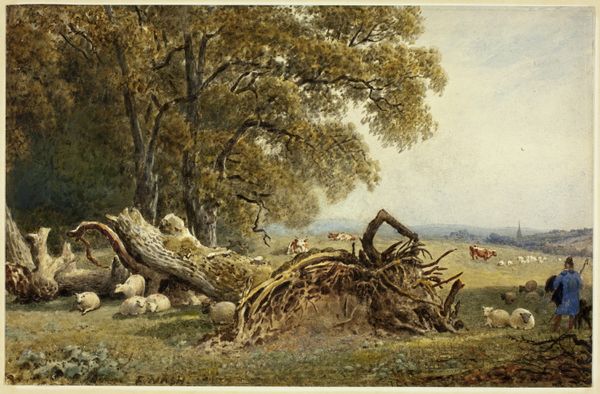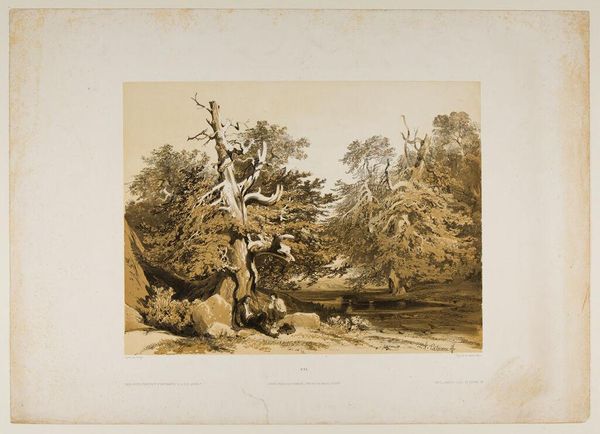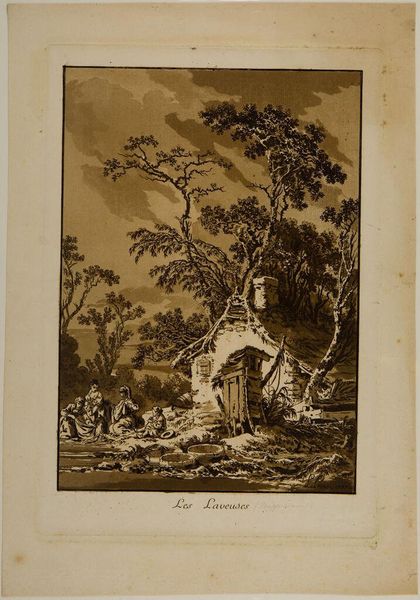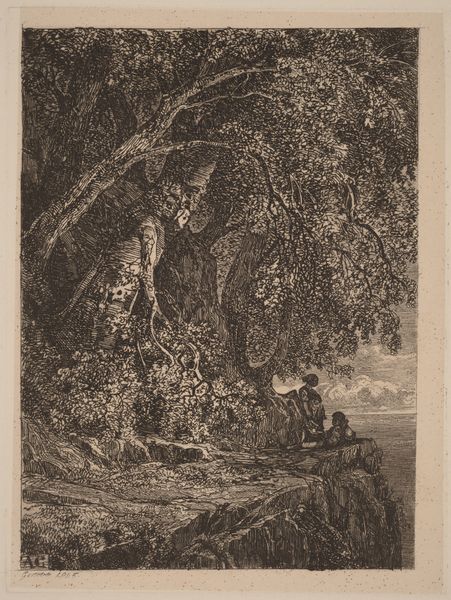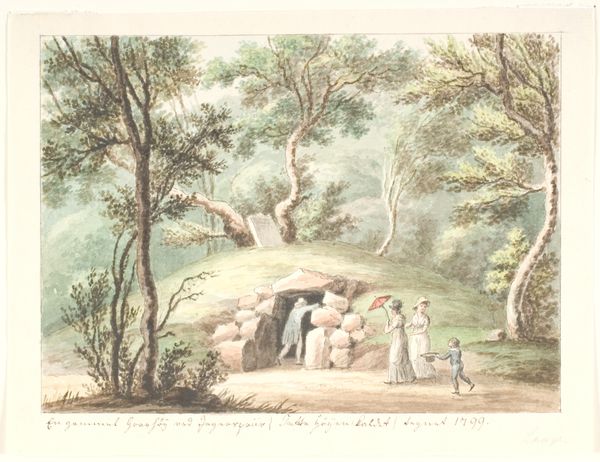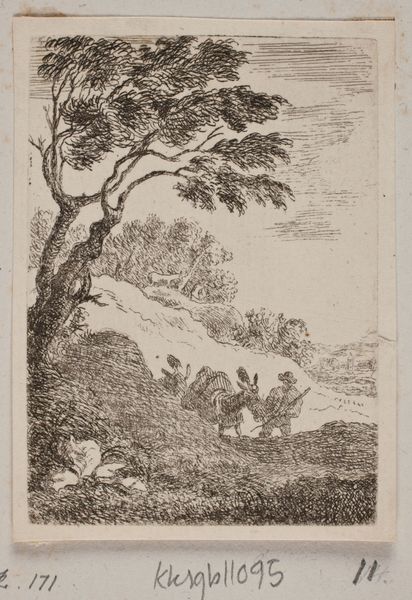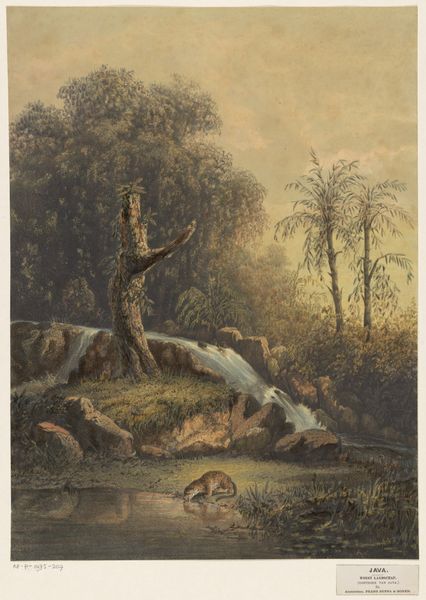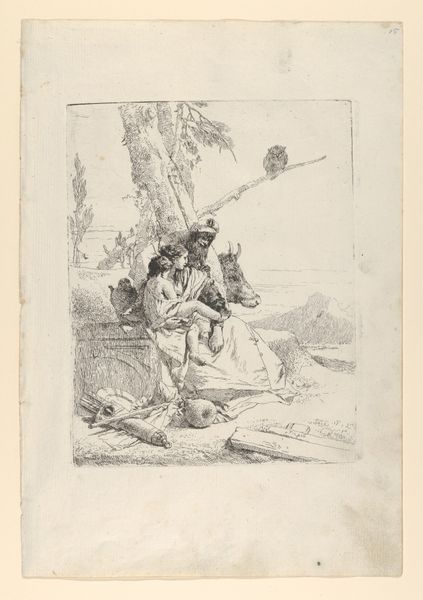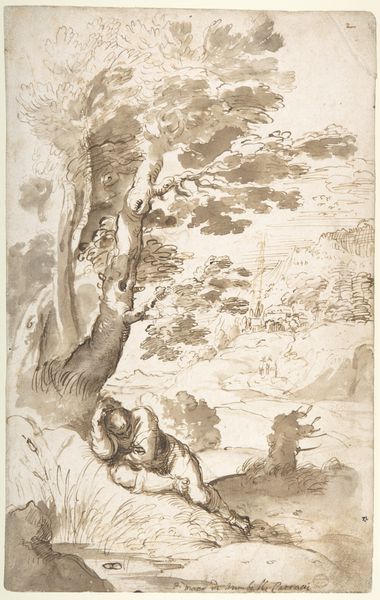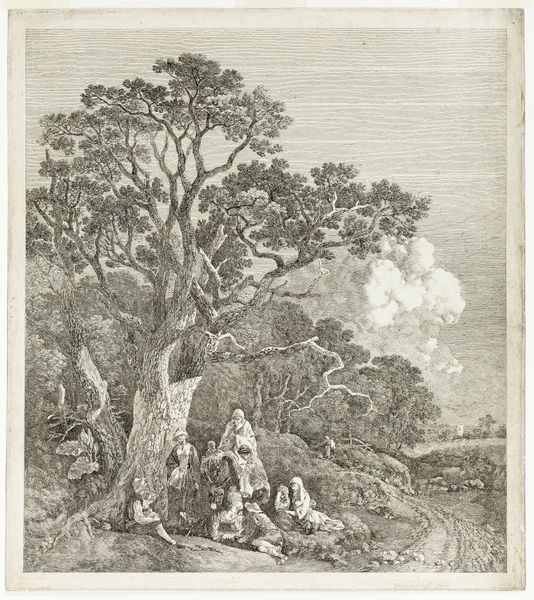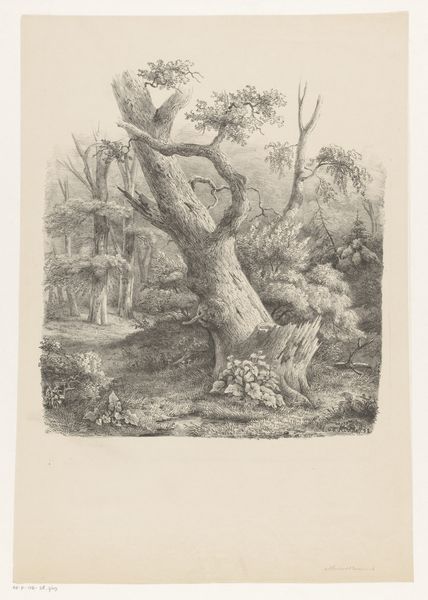
#
narrative-art
#
landscape
#
figuration
#
coloured pencil
#
watercolor
Dimensions: 7 3/8 × 9 9/16 in. (18.7 × 24.3 cm) (image)12 3/4 × 9 5/8 in. (32.4 × 24.4 cm) (sheet)21 1/2 × 17 9/16 × 1 1/8 in. (54.6 × 44.6 × 2.9 cm) (outer frame)
Copyright: Public Domain
Seth Eastman, an artist and military officer, created this watercolor called "Sounding Wind, The Chippewa Brave" sometime in the mid-19th century. Eastman's position in the U.S. Army gives us a lens to view the work through, particularly regarding the representation of Native American life and culture. The image depicts a Chippewa, or Ojibwe, man in a moment of conflict, perhaps preparing for battle. It seems to romanticize the Native American, placing him within a noble, if stereotyped, narrative. This approach was common in the 19th century, often used to justify government policies of displacement and assimilation. How much did Eastman participate in that political project, consciously or not? To understand this artwork fully, we would look at Eastman's biography, the history of U.S. government relations with Native American tribes, and the visual conventions of the time, especially in ethnographic illustration. Only then can we understand this image as a product of its specific social and political context.
Comments
minneapolisinstituteofart over 1 year ago
⋮
U.S. Army Captain Seth Eastman was a trained artist who served twice on the frontier at Minnesota’s Fort Snelling, from 1830 to 1832 and again from 1841 to 1848. His extensive firsthand, peaceful encounters with Native Americans gave him extraordinary opportunities to observe their customs and practices, which he documented in his art. Most of the 35 works on paper by Eastman in Mia's collection relate to an assignment to illustrate a massive survey of Native culture by Henry Rowe Schoolcraft, but several watercolors illustrate the writings of Eastman’s second wife, Mary Henderson Eastman. Often these were interpretations of Native stories she collected during her seven-year stay at Fort Snelling. This image, which shows the Anishinaabe (Ojibwe) Sounding Wind defending the Dakota woman he loves, was reproduced in an 1852 publication called “The Iris,” along with Mary's story of the lovers' plight.
Join the conversation
Join millions of artists and users on Artera today and experience the ultimate creative platform.
